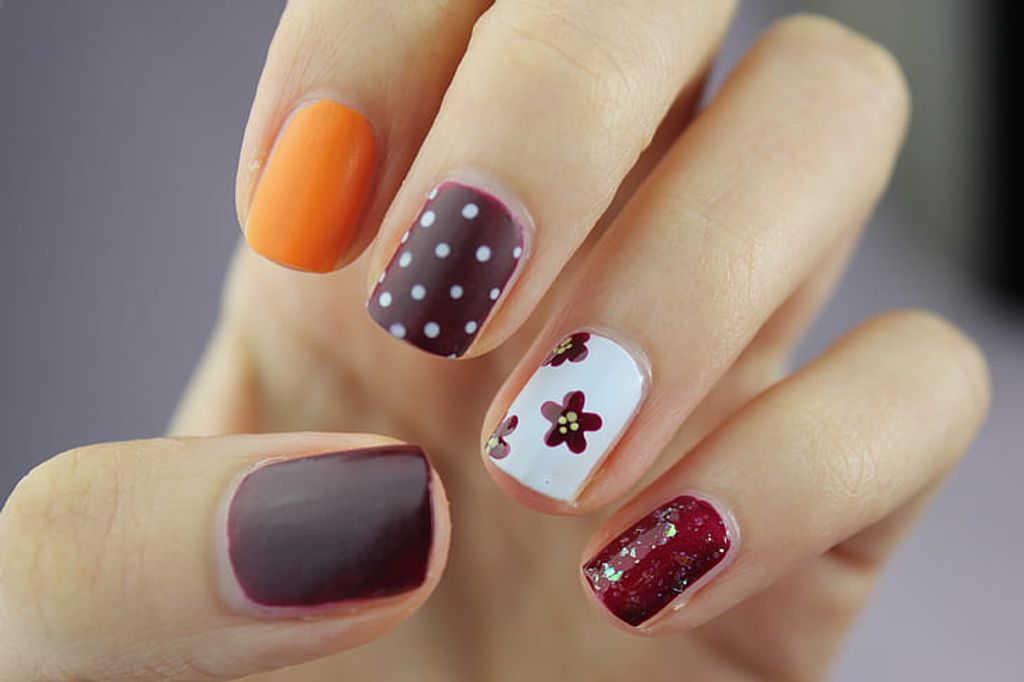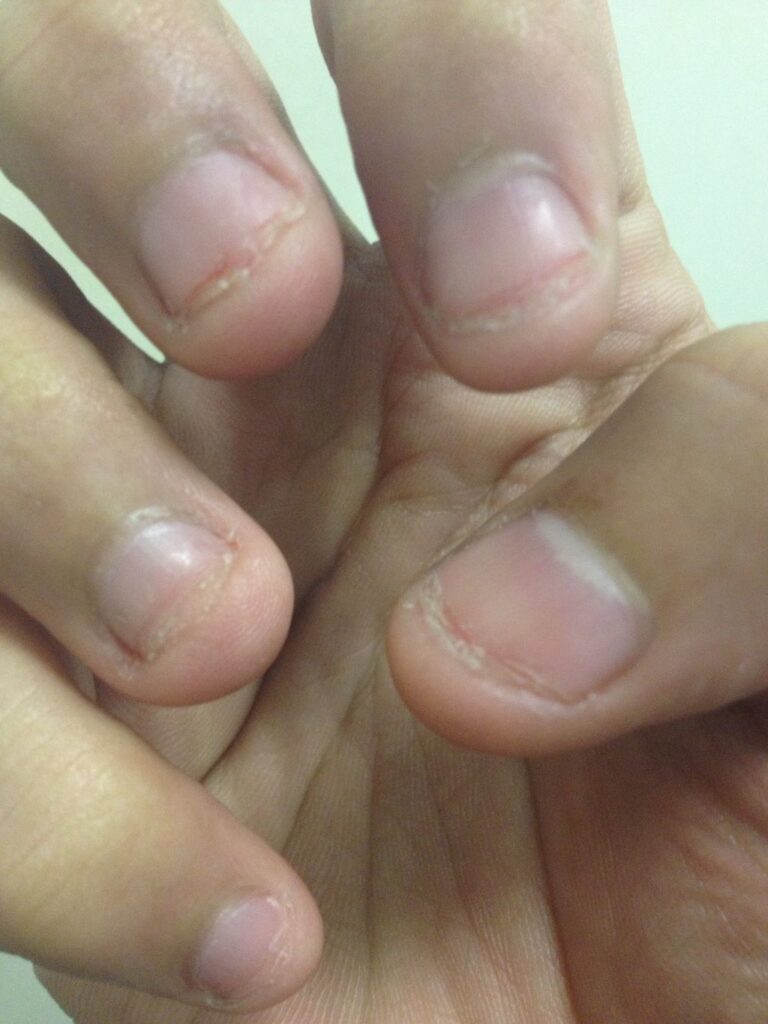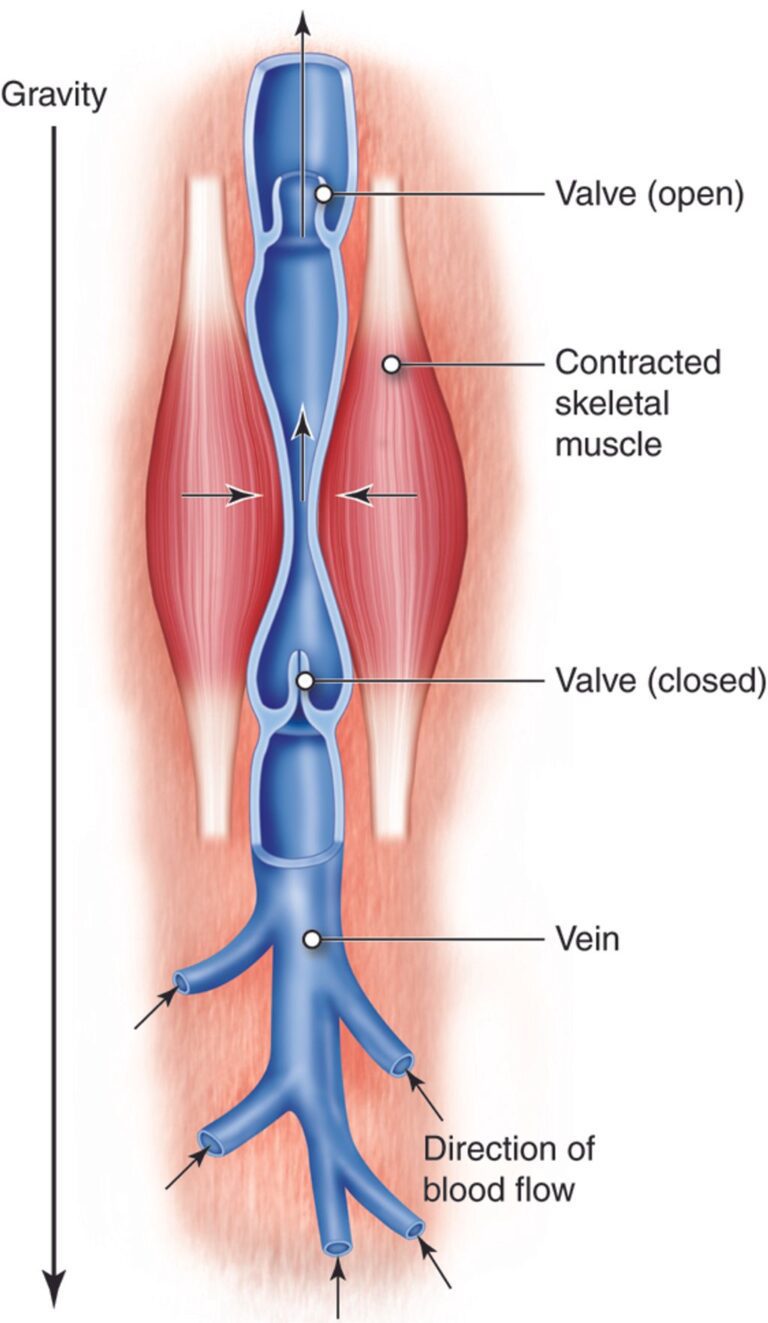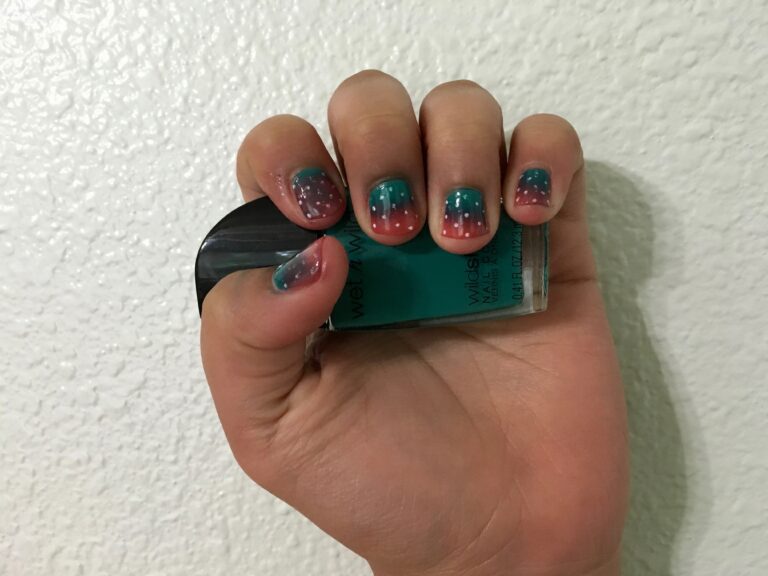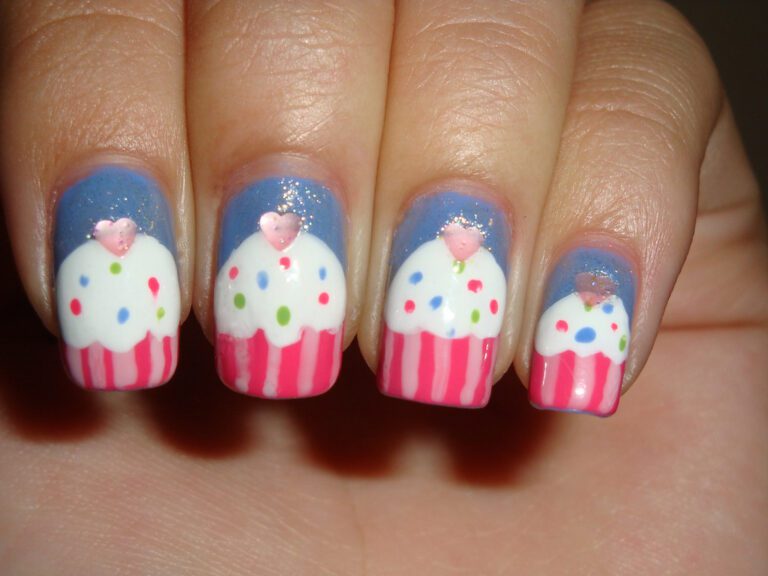“Nails as Indicators: What They Tell About Health”
Deprecated: mb_convert_encoding(): Handling HTML entities via mbstring is deprecated; use htmlspecialchars, htmlentities, or mb_encode_numericentity/mb_decode_numericentity instead in /home/u654140373/domains/nailinspire.com/public_html/wp-content/plugins/kadence-pro/dist/elements/elements-init.php on line 1267
Deprecated: Function utf8_decode() is deprecated in /home/u654140373/domains/nailinspire.com/public_html/wp-content/plugins/kadence-pro/dist/elements/elements-init.php on line 1275
In the world of health, our nails can serve as silent messengers, revealing subtle hints about our overall well-being. From color changes to texture variations, our nails can provide valuable insights into potential health concerns. Understanding the signs and signals that our nails exhibit can help us identify and address underlying health issues. Let’s explore the fascinating world of nail health and the valuable information it can provide.
Key Takeaways
- Pay attention to changes in nail color, as they can indicate underlying health issues such as anemia, fungal infections, and oxygen deficiency.
- Texture variations and growth patterns of nails can be indicative of conditions like psoriasis, thyroid disease, and nutritional deficits.
- Nail shape and curvature can offer subtle clues to health, such as spoon nails indicating iron deficiency and clubbing suggesting lung disease.
- Observing the cuticles and nail beds can provide insights into conditions like lupus, melanoma, and heart conditions.
- Be mindful of nail separation and discoloration, as they can serve as warning signals for thyroid disorders, minor trauma, and bacterial infections.
Unveiling the Secrets of Nail Color

Pale Nails and Anemia
When the body is low on red blood cells, it can lead to a condition known as anemia. One of the telltale signs of this deficiency is the appearance of pale nails. This pallor may be more noticeable in the nail bed, where the pinkish hue typically associated with healthy nails is absent.
Anemia can be caused by various factors, including iron deficiency, chronic diseases, or vitamin B12 shortages. It’s essential to pay attention to other symptoms that may accompany pale nails, such as fatigue, shortness of breath, or dizziness.
Tip: If you notice a persistent paleness in your nails, it’s advisable to consult a healthcare provider to rule out anemia or other underlying conditions.
While pale nails are a common symptom, they are not the sole indicator of anemia. A comprehensive medical evaluation is necessary to confirm the diagnosis and determine the appropriate treatment.
Yellowing Nails and Fungal Infections
When nails begin to take on a yellow hue, it’s often a sign of a fungal infection known as onychomycosis. This condition is typically characterized by a thickening of the nail, along with a change in texture and color. The infection can be stubborn, sometimes requiring prolonged treatment with antifungal medications.
Onychomycosis is not just a cosmetic issue; it can lead to more serious complications if left untreated. For instance, the infected nail can provide a gateway for bacteria, potentially leading to cellulitis. People with diabetes or a weakened immune system are particularly at risk.
To prevent fungal infections, it’s crucial to keep the feet clean and dry, avoid sharing nail clippers, and choose breathable footwear.
Treatment options vary depending on the severity of the infection. Over-the-counter antifungal creams and ointments may be effective for mild cases, while more severe infections might require prescription oral medications or even nail removal in extreme situations.
Blue Nails and Oxygen Deficiency
Blue nails, also known as cyanosis, occur when there is a lack of oxygen in the blood. This can be caused by cold temperatures or underlying health conditions. It’s important to pay attention to this symptom as it may indicate a need for medical evaluation and treatment. In some cases, blue nails can be a sign of a serious health issue, so it’s crucial to seek professional advice if you notice this discoloration in your nails. Additionally, monitoring other symptoms such as shortness of breath or chest pain can provide valuable insights into the underlying cause of blue nails.
Texture and Growth: Reading the Signs

Rippled Nails and Psoriasis
Rippled or pitted nails may be an early sign of psoriasis, a chronic skin condition that can affect various parts of the body, including the nails. This manifestation is not just a cosmetic issue; it can indicate more severe skin involvement or joint inflammation in psoriatic arthritis.
The surface of the nail can develop small indentations or pits, giving it a rippled appearance. In some cases, the nail may also change color or separate from the nail bed, a condition known as onycholysis. It’s important to recognize these symptoms early and consult a dermatologist for proper diagnosis and treatment.
Tips for managing nail psoriasis:
- Keep nails short to minimize injury and prevent the buildup of debris under the nail.
- Avoid manicures that can cause nail trauma.
- Use moisturizing creams to maintain nail hydration.
If you suspect your rippled nails are due to psoriasis, it’s crucial to seek medical advice. Early intervention can help manage symptoms and prevent further complications.
Brittle Nails and Thyroid Disease
Brittle nails are often a telltale sign of thyroid disease, specifically hypothyroidism. The condition can cause nails to become dry, brittle, and prone to splitting. Thyroid disease affects the body’s metabolism, which in turn impacts the health of the nails. It’s important to monitor nail health and consult a healthcare professional if brittle nails persist. Additionally, maintaining a balanced diet and proper nail care can help alleviate some of the symptoms associated with thyroid-related nail issues.
Slow Nail Growth and Nutritional Deficits
Slow nail growth can be an indication of nutritional deficits. It’s important to ensure that your diet provides the necessary nutrients for healthy nail growth. A balanced diet rich in vitamins, minerals, and proteins can promote optimal nail health. Additionally, staying hydrated is essential for maintaining nail strength and growth. Consider incorporating foods rich in biotin, iron, and omega-3 fatty acids to support healthy nail growth and prevent nutritional deficiencies. Pay attention to your nail growth rate as it can provide valuable insights into your overall nutritional status.
Nail Shape and Curvature: Subtle Clues to Health

Spoon Nails and Iron Deficiency
Spoon nails, also known as koilonychia, are characterized by a concave shape, often with raised edges. This condition is commonly associated with iron deficiency anemia. Individuals with spoon nails may experience symptoms such as fatigue, weakness, and pale skin. It’s important to consult a healthcare professional for proper diagnosis and treatment. Additionally, incorporating iron-rich foods into the diet and considering iron supplements may help address this deficiency. Regular monitoring of iron levels is crucial for managing this condition effectively.
Clubbing and Lung Disease
Clubbing, also known as digital clubbing, is a condition characterized by enlargement of the fingertips and a change in the angle where the nails emerge. This unusual sign is associated with various lung and airway disorders, including lung cancer. It can appear as a subtle indication of an underlying health issue, prompting further investigation by healthcare professionals. Understanding the presence of clubbing can aid in early detection and timely intervention. If you notice any changes in the appearance of your fingertips, especially the enlargement and rounding of the nails, consult a healthcare provider for proper evaluation and diagnosis.
Beau’s Lines and Systemic Illness
Beau’s lines, also known as transverse furrows or Beau’s illness, are horizontal depressions that traverse the nail plate. These lines are often associated with systemic illnesses, indicating a disruption in the nail growth process. While the exact mechanism is not fully understood, Beau’s lines can be a subtle yet significant indicator of underlying health conditions. It is essential to consult a healthcare professional for proper diagnosis and management.
Beau’s lines may appear following severe infections, trauma, or systemic diseases. They are not exclusive to a single condition and can manifest in various health-related scenarios. Understanding the potential implications of Beau’s lines can aid in early detection and intervention for systemic illnesses.
- Beau’s lines are not a standalone diagnostic tool but serve as a valuable clue to investigate underlying health concerns.
- Consult a healthcare professional if Beau’s lines are observed, especially in the absence of known trauma or infection.
- Systemic illnesses associated with Beau’s lines may require comprehensive medical evaluation and treatment.
It is crucial to recognize Beau’s lines as a potential sign of systemic illness and seek professional guidance for comprehensive health assessment and management.
Cuticle and Nail Bed Insights

Inflamed Cuticles and Lupus
Inflammation around the nail cuticles can be indicative of underlying health conditions, such as lupus. While mild inflammation is common and can be caused by various factors, severe inflammation may signal serious connective-tissue ailments like lupus. It’s important to monitor and address any persistent inflammation to ensure overall health and well-being. Seeking medical advice for persistent inflammation is crucial for accurate diagnosis and treatment. Additionally, maintaining good nail hygiene and avoiding harsh chemicals can help alleviate inflammation and promote nail health.
Dark Streaks and Melanoma
When examining the nails for health indicators, the presence of dark streaks can be a cause for concern. These streaks, often brown or black in color, may signify a type of skin cancer known as subungual melanoma. Unlike the more common moles associated with melanoma, subungual melanoma appears beneath the nail and can be easily overlooked.
Subungual melanoma is typically characterized by a dark line or streak in the nail. It’s essential to monitor any changes in size or color of these streaks, as they can be indicative of cancer growth. While these melanomas are rare, they can be aggressive and require prompt attention.
Tip: If you notice a persistent dark streak under your nail that changes over time, seek medical advice as soon as possible.
Certain types of melanoma may appear colorless or resemble scar tissue, making them challenging to detect. Therefore, any unusual changes in your nails should be evaluated by a healthcare professional.
Red Nail Beds and Heart Conditions
Red nail beds can be an indicator of underlying heart conditions. The redness may be a sign of increased blood flow to the nail beds, which can be associated with heart problems. It’s important to monitor any changes in nail bed color and consult a healthcare professional if you notice persistent redness. Additionally, paying attention to other symptoms such as shortness of breath, chest pain, or fatigue can provide valuable insights into potential heart issues. Remember, early detection and prompt medical attention are crucial for managing heart conditions effectively.
Nail Separation and Discoloration: Warning Signals

Onycholysis and Thyroid Disorders
Onycholysis, the painless separation of the nail from the nail bed, is often a telltale sign of underlying health issues, particularly thyroid disorders. When the thyroid malfunctions, it can lead to hormonal imbalances that manifest in various ways, including the health of your nails. Thyroid-related onycholysis typically occurs in hyperthyroidism, where an excess of thyroid hormones can cause nails to become loose and detach.
To manage onycholysis, it is crucial to address the root cause. For those with thyroid conditions, regulating thyroid function is paramount. Additionally, protecting the nails from trauma and avoiding prolonged exposure to water can help prevent further nail separation. Here are some practical tips:
- Keep nails trimmed and clean
- Wear protective gloves when using detergents or cleaning agents
- Avoid nail polish removers containing acetone or harsh chemicals
Tip: If you notice persistent nail separation, it’s important to consult a healthcare provider to rule out thyroid dysfunction or other systemic conditions.
White Spots and Minor Trauma
White spots on the nails, also known as leukonychia, are often benign and typically caused by minor trauma or fungal infections. These spots are a common occurrence and usually do not indicate a serious health concern. However, if the white spots persist or increase in number, it’s advisable to consult a healthcare professional for further evaluation and guidance.
It’s important to note that wearing nail polish for prolonged periods and certain underlying medical conditions can also contribute to the appearance of white spots on the nails. In some cases, these spots may be a result of infections or injuries, leading to varying kinds of white spots.
If you notice persistent white spots on your nails, it’s recommended to seek professional advice to determine the underlying cause and appropriate treatment. While minor trauma is a common cause, it’s essential to rule out any potential underlying health issues that may be associated with the appearance of white spots on the nails.
Green-Black Nails and Bacterial Infections
When nails take on a green-black hue, it is often a sign of a bacterial infection. The culprit is typically Pseudomonas aeruginosa, a bacterium commonly found in water environments, including swimming pools. This type of infection is known to occur under certain conditions, such as prolonged exposure to water or after damage to the nail or nail bed.
Treatment for this condition usually involves antibiotics, and oral quinolones like ciprofloxacin are often prescribed. It’s crucial to address the infection promptly to prevent further complications.
Tip: Keeping nails dry and clean is essential in preventing bacterial infections. If you frequent swimming pools or are exposed to water for extended periods, take extra care to dry your nails thoroughly.
The Impact of Lifestyle on Nail Health

Chemical Exposure and Nail Deterioration
Chemical exposure can have a significant impact on nail health. Repeated exposure to harsh cleaning chemicals or nail cosmetics can lead to [brittle nails](https://www.huffpost.com/entry/what-your-nail-technician-knows-about-your-health-just-from-looking-at-your-nails_l_6549058ae4b0e3ecaf8a3faf), making them prone to breaking. It’s important to be mindful of the chemical ingredients in nail products, as they can have potential health effects. Nail salon technicians, in particular, face chronic exposure to volatile organic compounds (VOCs), which can lead to adverse health outcomes including cancer. Being aware of the risks associated with chemical exposure is crucial for maintaining healthy nails.
Stress and Nail Biting
Nail biting is often a physical manifestation of stress or anxiety. This compulsive behavior can lead to various nail problems, including infections and deformities. It’s not just a bad habit; it’s a sign that emotional or psychological issues may need to be addressed.
- Recognize the triggers: Identifying what prompts you to bite your nails is the first step towards stopping.
- Replace the habit: Find a less harmful way to cope with stress, such as squeezing a stress ball or practicing deep breathing exercises.
- Keep your nails trimmed: Short nails are less tempting to bite.
- Use bitter-tasting nail polish: Products designed to deter nail biting can be effective.
Remember, seeking help from a behavioral expert can provide strategies tailored to your needs, ensuring a healthier relationship with your nails and overall well-being.
Diet and Nail Strength
A balanced diet rich in essential nutrients is crucial for maintaining strong and healthy nails. Incorporating foods high in biotin such as eggs, nuts, seeds, sweet potatoes, and beans can contribute to nail strength and health. Additionally, consuming foods rich in vitamins A, C, and E, as well as minerals like zinc and iron, can promote overall nail health and growth. Ensuring a well-rounded diet that includes these nutrients is key to supporting nail strength and vitality. It’s important to consult with a healthcare professional for personalized dietary recommendations based on individual needs and health conditions.
The impact of lifestyle on nail health is a crucial aspect of overall well-being. At NAILinspire.com, we understand the importance of maintaining healthy nails and the role that lifestyle choices play in achieving this. Our ultimate online nail art design library is a treasure trove of inspiration, tips, and techniques to help you achieve the perfect nail health. Whether you’re a nail art enthusiast or someone looking to improve the health of your nails, NAILinspire.com is your go-to destination for all things nails.
Frequently Asked Questions
What do pale nails indicate?
Pale nails can indicate anemia, a condition characterized by low red blood cell count or hemoglobin levels.
Why do nails turn yellow?
Nails can turn yellow due to fungal infections, which are caused by the overgrowth of fungi on or under the nail.
What does it mean if nails appear blue?
Blue nails may indicate oxygen deficiency, which can be a sign of respiratory or circulatory problems.
What causes rippled nails?
Rippled nails can be a sign of psoriasis, a chronic autoimmune condition that affects the skin and joints.
How does stress affect nail health?
Stress can lead to nail biting, which can weaken and damage the nails over time.
Can diet impact nail strength?
Yes, a balanced diet rich in essential nutrients like protein, vitamins, and minerals is important for maintaining strong and healthy nails.

